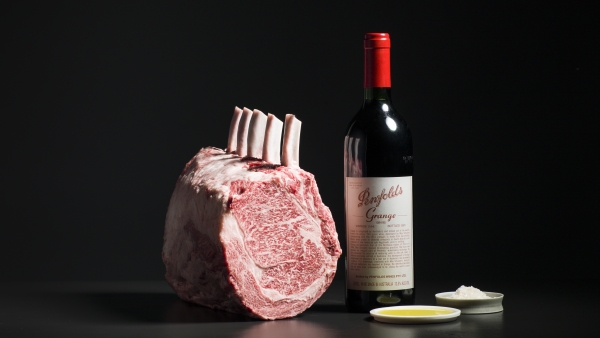Along the Limestone Coast of South Australia, thousands of chocolate-fed cattle are destined to become cash cows for restaurateurs in Hong Kong and around the world.
Born and bred on a 3,000-hectare farm, the Wagyu cattle are fed a grain diet supplemented with sweet treats – namely Cadbury chocolate and biscuits – which give the beef its distinctive taste.
Although it’s derived from Wagyu cattle, this “luxury” beef is wholly an Australian product and tastes different from its Japanese counterpart. For that reason, it has been named after the Mayura Station in Australia, which was first established as a pastoral operation in 1845.
Distributed throughout Hong Kong by premium food supplier Waves Pacific, Mayura beef appears on the menu at several award-winning restaurants including The Four Seasons, Otto e Mezzo, Arcane, Serge et le Phoque and Le Garcon Saigon.
At Otto e Mezzo, the Mayura bone-in ribeye is one of the signature dishes. Similarly, The Lounge at The Four Seasons whips up a medley of beef dishes that would impress any meat lover, two of which are made from Mayura beef.
The grilled Mayura sirloin – beautifully plated with young tropea onion, trumpet zucchini and cherry blossom salt – is both tender and flavourful.
It’s not easy producing beef which boasts both of these qualities, says Scott de Bruin, managing partner at the Mayura Station in Australia. The cattle at Mayura Station live for 24-30 months, which is nearly double the life span of cattle raised on larger farms.
“The younger the cattle, the more tender the beef, but the older the cattle, the more flavour you get,” De Bruin says.
“It’s hard for a lot of people to produce older cattle and still keep it tender, but on the flip side you’ve got to have a balance of good, robust flavour and tenderness. That’s the challenge, but it’s what we do so well at Mayura.”
The Lounge also serves a 250g Mayura striploin renowned for its depth of flavour, which is where the chocolate factors in.
“When you compare (beef) products that are grilled you’ll find that they often have some bitterness in flavour, whereas this doesn’t. It has a natural sweetness,” De Bruin says.
The decision to feed Mayura cattle chocolate was initially a matter of necessity, but it quickly became a matter of taste. Corn doesn’t grow well in South Australia, so they analysed the feed given to Wagyu cattle in Japan in search of alternatives. They discovered that the ingredients in chocolate are similar to the ingredients used in more traditional feed.
“As you can imagine, the cows love it,” De Bruin says. “It also has a positive effect on the meat’s taste. We did stop using chocolate in the cow’s diets once, but customers noticed the difference very quickly so we had to revert back.”
De Bruin says people who try Mayura beef tend to be lifelong buyers once they become hooked on its one-of-a-kind flavour.
Mayura Station also offers a “paddock to plate” tasting experience for beef lovers who happen to find themselves in South Australia. For more information, visit www.mayurastation.com/dining.
Text: Emily Petsko



